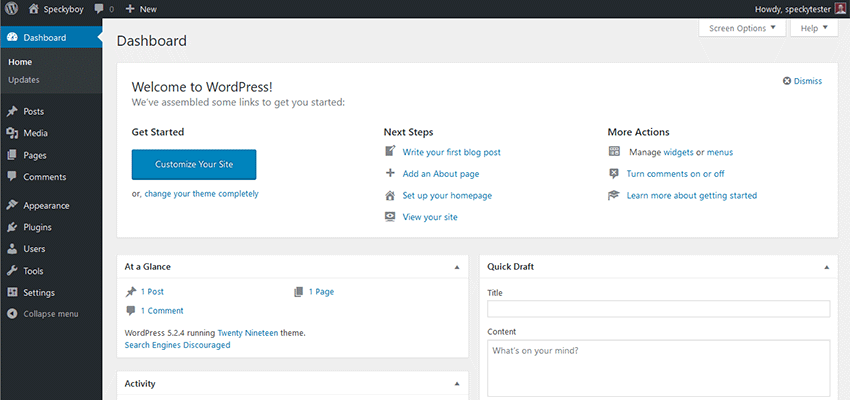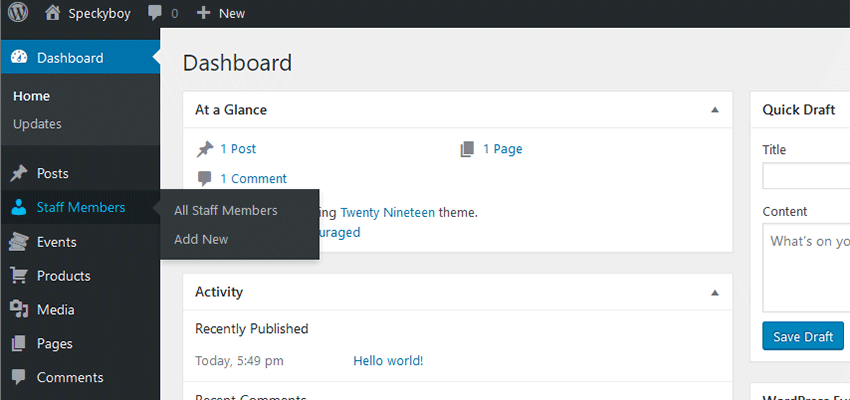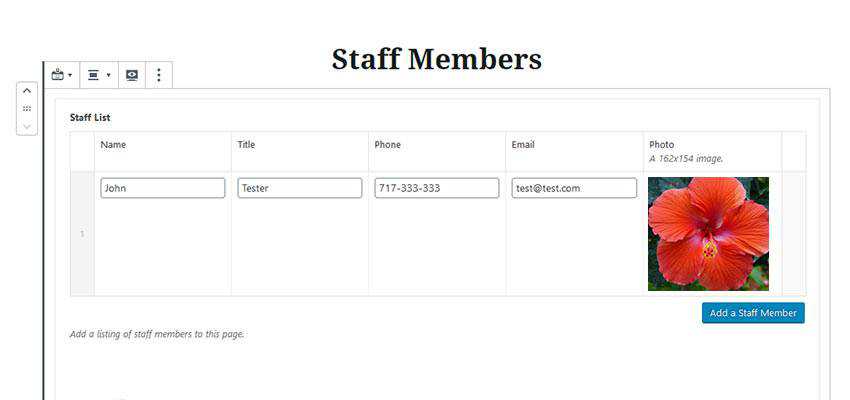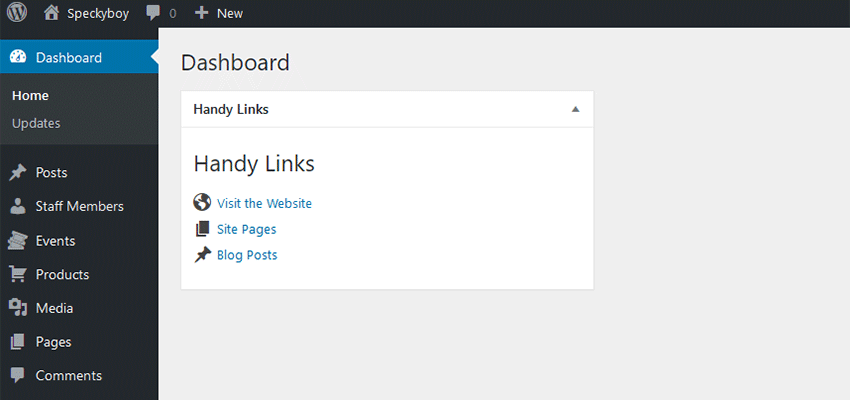Lumen PHP JWT API Authentication
Read more at https://www.phpclasses.org/package/11428-PHP-Create-an-API-that-supports-JSON-Web-tokens.html#2019-11-11-14:14:27
Rapid Loss is a range of meal replacement shakes that are used in conjunction with a calorie controlled diet. The shakes are designed for those needing to lose significant amounts of weight, rather than just wanting to lose a few kilos before summer hits.
Rapid Loss Shakes are designed as part of the Rapid Loss Weight Management Program. In addition to weight loss, these meal replacements are also intended to keep you feeling full while you learn how to follow a healthy eating plan involving nutritious, unprocessed foods.
The Rapid Loss Weight Management Program is a ‘bridging diet’ which aims to take people who typically consume large portions and crave sugars, salts and fats, and change their habits to match the ideal healthy diet recommended by Australian Health bodies and leading nutritionists. The Rapid Loss Shakes are claimed to help you lose weight fast, as well as keep you feeling full while you learn how to follow a healthy eating plan containing nutritious, unprocessed foods.

The Rapid Loss Weight Management Program works to give you the tools you need to make “smarter, healthier choices and help you reach your weight loss goals, so you can maintain the results — long term”. Focusing on food and exercise, the various options include:
Each program is said to be created by an expert team of health and fitness professionals, who will also provide meal plans to control hunger and calorie intake. When you sign up to the program, you will be allocated the program claimed to best suit your lifestyle health and fitness goals. This is based on the answers you provide in the registration form, which includes questions about your height, current weight and goal weight, activity level and access to a gym.

Rapid Loss keeps its weight loss shake range simple, offering its original formula and a new 30% less sugar line to choose from. The brand warns these shakes should only be used as a meal replacement, not as a total diet replacement.

The classic Rapid Loss weight loss shake is claimed to improve overall health and wellbeing, in addition to helping people lose weight. The brand recommends the meal replacement shake for those looking to quickly shed kilos or maintain their current weight with an active lifestyle. It can also be used as part of the Rapid Loss Weight Management Program.
If you have a food intolerance, the Rapid Loss meal replacement shake is stated to be gluten free. It’s also said to provide low GI and a high amount of fibre.
The original formula comes in either a 750g tub or a pack of 14 sachets. Flavours typically include chocolate, vanilla, latte and strawberry. Although there are extra flavours like banana for the tub version, or an assorted mix of flavours for the sachet option.

The supposedly ‘New Improved Rapid Loss Formula’ is claimed to contain 30% less sugar and costs $27.95 for a 575g tub. It’s said to include ingredients like Garcinia Cambogia, Guarana Extract MCT Oil to improve energy, plus high-protein for muscle recovery and high-fibre to keep you feeling fuller for longer. Flavours available include choc mint, chocolate, salted caramel, banana, latte, vanilla and strawberry.

Rapid Loss products are designed to support consumers as they lose weight, while also educating people on developing healthy habits and maintaining their weight once off the program. According to Rapid Loss: “We use the filling Rapid Loss shakes to help you remain fuller whilst we teach you how to follow a healthy eating format that consists of nutritious, unprocessed foods. The shakes enable you to lose the weight fast, and the free education ensures you keep the weight off.”
Rapid Loss also believes in supporting and motivating customers to achieve their best results. That’s why it provides a Facebook community and interactive social media pages for consumers to post before and after photos, plus ask questions and find some workout inspiration. To make sure you find the best weight loss shake for you, it’s important to do your research. To help get you started why not check out our weight loss shake ratings that compare Rapid Loss with a number of other brands on the market.
Refrain from posting comments that are obscene, defamatory or inflammatory, and do not indulge in personal attacks, name calling or inciting hatred against any community. Help us delete comments that do not follow these guidelines by marking them offensive. Let’s work together to keep the conversation civil.
HIDERefrain from posting comments that are obscene, defamatory or inflammatory, and do not indulge in personal attacks, name calling or inciting hatred against any community. Help us delete comments that do not follow these guidelines by marking them offensive. Let’s work together to keep the conversation civil.
HIDEHere we have issued the research report on the worldwide Garcinia Cambogia Extract market that accountable to showcase the topmost players’ profiles as well as a competitive analysis of the firm. The report also includes SWOT analysis, fiscal status, present developments, acquisitions, and mergers. The Garcinia Cambogia Extract market report highlights some major challenges and newer growth tactics influenced by the industry manufacturers that articulate the international competitive scale of this business sector. Reportedly, the global Garcinia Cambogia Extract industry permits global vendors to understand the Garcinia Cambogia Extract market trends and meanwhile, generate important tactical actions to boost their businesses. It also offers in-depth analysis of each region such as the Garcinia Cambogia Extract market volume in the estimated areas.
Download a sample copy of Garcinia Cambogia Extract report: https://spiremarketresearch.com/report/global-garcinia-cambogia-extract-market-23732#request-sample
The study on the world Garcinia Cambogia Extract market research report describes plenty of industrial features that contains different drivers, upcoming opportunities, challenges, production demand and much more. A newly published report introduces some of the major elements including geographical regions, innovative technologies, vendors, etc. Furthermore, the worldwide Garcinia Cambogia Extract industry report exhibits a competitive structure and index growth over the expected period while formulating the Garcinia Cambogia Extract market globally. In addition to this, the Garcinia Cambogia Extract report also provides a detailed data on the present status of the industry which is considered to be useful guidance and direction for the companies and new entrants included in this report.
The report on Garcinia Cambogia Extract market incorporates several strategies including tabular and geographical formats of figures as well as facts to examine the numerous marketing information. The Global Garcinia Cambogia Extract market status, regional pattern of the Garcinia Cambogia Extract market, differentiable development trends, industrial policies, enterprise competition structure, advantages as well as disadvantages of commercial materials has also been administrated in the Garcinia Cambogia Extract report.
Browse Full Garcinia Cambogia Extract market report TOC: https://spiremarketresearch.com/report/global-garcinia-cambogia-extract-market-23732
It also includes global Garcinia Cambogia Extract market status, and forecast in detail. It segments the worldwide Garcinia Cambogia Extract market size, revenue and product price by application, major players and regions. The report also explains the fragmentation of the Garcinia Cambogia Extract market in terms of material, topography and application and forecast to 2025. It is an excellent guide and high-quality findings that provides statistics related to the crucial economic scenarios, and it focuses on major districts and key countries.
Leading industry manufacturers included in this report:
Xi’an Lyphar Biotech
Shaanxi Fuheng (FH) Biotechnology
Shaanxi Guanjie Technology
Wuhan Vanz Pharm
Hunan Kanerga Pharmaceutical Sales
TWO BLUE DIAMONDS
MARUTI FUTURISTIC PHARMA
KINAL GLOBAL CARE
NUTRA GRACE
Global Garcinia Cambogia Extract market segmentation by product type:
0.5
0.6
Other
The application can be split into:
Food Industry
Pharmaceuticals Industry
Oth
Article source: https://www.cleevenews.co.uk/2019/11/11/garcinia-cambogia-extract-market-business-strategy-2019-by-companies-wuhan-vanz-pharm-nutra-grace/
Building a website with WordPress for your clients opens them up to a whole new world of possibilities. Just about any sort of functionality they need can be installed with a few clicks.
But, when it comes to introducing them to the all-powerful WordPress dashboard, all of that possibility can be a bit overwhelming. The sheer number of menu items, options and assorted litter make the back end difficult to digest.
For example, put yourself in the place of a brand-new user, logging in for the first time. Visually, there is a lot to take in – even with a default installation. And a typical website is anything but default. Themes and plugins add all sorts of goodies that, while often useful, are also liable to send a newbie running for a remote cabin in the woods.
Therefore, it’s up to us to try and improve this experience for our clients. Here are a few simple ways to do just that.
Not every user needs full administrative access to the WordPress dashboard. While it’s always a good idea to provide an admin account to your client, it doesn’t necessarily have to be the one they utilize on a daily basis.
WordPress has a wonderful Roles and Capabilities feature that offers various levels of access. Why, just logging in with an “editor” account, as opposed to administrator, will take away a lot of advanced menu items. It’s not perfect, but does make for a less-cluttered experience.
Of course, a lower level of access may mean that some necessary functions aren’t available. In that case, an administrator account can be used or you might even create a custom role via a plugin.
This will allow clients access to the things they need, while keeping them away from what they don’t. As a bonus, this also benefits security as well.

The ability to customize WordPress is one of its most powerful features. While we often think of customization in terms of themes or plugins, it goes well beyond those areas.
Through the use of custom post types and/or custom fields, you can make the task of managing content much more intuitive:
On the surface, a custom post type is really just a set of traditional pages or posts – but with a different name. As developers, we know that they are capable of a whole lot more. But from a client’s perspective, the cosmetic benefits alone are huge. And that is one of the most compelling reasons to use them.
By default, WordPress uses traditional posts, categories and tags to organize content. It certainly works, but it also has the tendency to become a tangled mess as more types of content are added.
Plus, clients (or whoever was responsible for adding content) have to remember several steps to ensure that a post ends up in the right spot. Forgetting to click a category, for example, may mean a new post is nearly impossible to find on the front end.
With a custom post type, each type of content can be clearly labeled on the dashboard’s menu. Whether it’s “Events”, “Press Releases” or “Staff”, it takes the guesswork out of where something should go. Sure, categories and tags may be used within, but at least content managers will know where to start the process.

Whether your website is using the Gutenberg block editor or the Classic flavor, content starts out as a blank slate. In an opposite-of-the-dashboard sort of way, this can also lead to a feeling of being overwhelmed. Where does one even start?
So, when it comes to helping users on a micro-level, custom fields are a great way to make content creation a more intuitive experience. Seeing, for example, a set of fields that make up a staff member’s profile removes doubt. Users can see what they need to fill in and will have a better understanding of the final result.
However, neither custom post types nor custom fields fix everything by themselves. You still need to have a plan and take care to implement them in a way that really does make things easier.

Tidying up the dashboard for your clients doesn’t have to end with the measures above. If you want to really dive in, there are some highly-custom possibilities that go the extra mile. I’m going to introduce you to one I’ve been personally utilizing on some recent projects.
While we can trim off some of the unnecessary menu items, the back end of a WordPress website can still be too cluttered. So, when thinking of clients who aren’t necessarily comfortable with technology (or just crave efficiency), I wanted to create a little “safe space” that acts as a guide to their site.
The solution was a fairly simple (and admittedly rudimentary) dashboard widget called “Handy Links”. To be clear, there’s nothing fancy about it. It’s an amalgamation of code from various places. But it does aim to serve two purposes:
Most importantly, it provides users with something to focus on when logging in. They can click to get to where they need to go. And as new things need added, it’s just a matter of adding a new bullet to the list within the plugin’s code.

Feel free to take it and experiment! Just grab a copy of the file and place it in your site’s /wp-content/plugins/ directory. Then, login to WordPress and activate the “Handy Links Widget for WordPress” plugin.
From there, you can add your own custom links using the example code (you’ll just need to save changes and re-upload to your plugins folder). Also note that the widget is set to display only to users with the administrator or editor roles. But again, that can be customized to fit your needs.
If nothing else, the ideas above are really just the tip of the iceberg in terms of how the WordPress dashboard can better serve clients. Smart implementation of features makes the experience more intuitive and hopefully reduces the time you spend on training and support.
For clients, a clean, well-thought-out dashboard brings a higher level of comfort and confidence. They’ll know where to go, what to do and can get things done faster. That alone makes it worth your effort.
The post Ideas for Making the WordPress Back End More User Friendly appeared first on Speckyboy Design Magazine.
Building a website with WordPress for your clients opens them up to a whole new world of possibilities. Just about any sort of functionality they need can be installed with a few clicks.
But, when it comes to introducing them to the all-powerful WordPress dashboard, all of that possibility can be a bit overwhelming. The sheer number of menu items, options and assorted litter make the back end difficult to digest.
For example, put yourself in the place of a brand-new user, logging in for the first time. Visually, there is a lot to take in – even with a default installation. And a typical website is anything but default. Themes and plugins add all sorts of goodies that, while often useful, are also liable to send a newbie running for a remote cabin in the woods.
Therefore, it’s up to us to try and improve this experience for our clients. Here are a few simple ways to do just that.
Not every user needs full administrative access to the WordPress dashboard. While it’s always a good idea to provide an admin account to your client, it doesn’t necessarily have to be the one they utilize on a daily basis.
WordPress has a wonderful Roles and Capabilities feature that offers various levels of access. Why, just logging in with an “editor” account, as opposed to administrator, will take away a lot of advanced menu items. It’s not perfect, but does make for a less-cluttered experience.
Of course, a lower level of access may mean that some necessary functions aren’t available. In that case, an administrator account can be used or you might even create a custom role via a plugin.
This will allow clients access to the things they need, while keeping them away from what they don’t. As a bonus, this also benefits security as well.

The ability to customize WordPress is one of its most powerful features. While we often think of customization in terms of themes or plugins, it goes well beyond those areas.
Through the use of custom post types and/or custom fields, you can make the task of managing content much more intuitive:
On the surface, a custom post type is really just a set of traditional pages or posts – but with a different name. As developers, we know that they are capable of a whole lot more. But from a client’s perspective, the cosmetic benefits alone are huge. And that is one of the most compelling reasons to use them.
By default, WordPress uses traditional posts, categories and tags to organize content. It certainly works, but it also has the tendency to become a tangled mess as more types of content are added.
Plus, clients (or whoever was responsible for adding content) have to remember several steps to ensure that a post ends up in the right spot. Forgetting to click a category, for example, may mean a new post is nearly impossible to find on the front end.
With a custom post type, each type of content can be clearly labeled on the dashboard’s menu. Whether it’s “Events”, “Press Releases” or “Staff”, it takes the guesswork out of where something should go. Sure, categories and tags may be used within, but at least content managers will know where to start the process.

Whether your website is using the Gutenberg block editor or the Classic flavor, content starts out as a blank slate. In an opposite-of-the-dashboard sort of way, this can also lead to a feeling of being overwhelmed. Where does one even start?
So, when it comes to helping users on a micro-level, custom fields are a great way to make content creation a more intuitive experience. Seeing, for example, a set of fields that make up a staff member’s profile removes doubt. Users can see what they need to fill in and will have a better understanding of the final result.
However, neither custom post types nor custom fields fix everything by themselves. You still need to have a plan and take care to implement them in a way that really does make things easier.

Tidying up the dashboard for your clients doesn’t have to end with the measures above. If you want to really dive in, there are some highly-custom possibilities that go the extra mile. I’m going to introduce you to one I’ve been personally utilizing on some recent projects.
While we can trim off some of the unnecessary menu items, the back end of a WordPress website can still be too cluttered. So, when thinking of clients who aren’t necessarily comfortable with technology (or just crave efficiency), I wanted to create a little “safe space” that acts as a guide to their site.
The solution was a fairly simple (and admittedly rudimentary) dashboard widget called “Handy Links”. To be clear, there’s nothing fancy about it. It’s an amalgamation of code from various places. But it does aim to serve two purposes:
Most importantly, it provides users with something to focus on when logging in. They can click to get to where they need to go. And as new things need added, it’s just a matter of adding a new bullet to the list within the plugin’s code.

Feel free to take it and experiment! Just grab a copy of the file and place it in your site’s /wp-content/plugins/ directory. Then, login to WordPress and activate the “Handy Links Widget for WordPress” plugin.
From there, you can add your own custom links using the example code (you’ll just need to save changes and re-upload to your plugins folder). Also note that the widget is set to display only to users with the administrator or editor roles. But again, that can be customized to fit your needs.
If nothing else, the ideas above are really just the tip of the iceberg in terms of how the WordPress dashboard can better serve clients. Smart implementation of features makes the experience more intuitive and hopefully reduces the time you spend on training and support.
For clients, a clean, well-thought-out dashboard brings a higher level of comfort and confidence. They’ll know where to go, what to do and can get things done faster. That alone makes it worth your effort.
The post Ideas for Making the WordPress Back End More User Friendly appeared first on Speckyboy Design Magazine.
